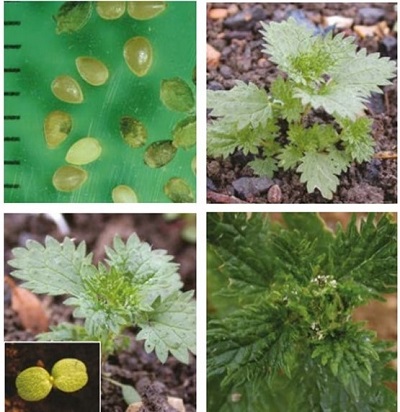- Home
- Knowledge library
- Distribution and biology of small nettle in the UK
Distribution and biology of small nettle in the UK
Small nettle is poorly competitive broad-leaved weed in cereals with value to biodiversity. Find out how to identify and control it.
Overview
Small nettle (Urtica urens) is more common in broad-leaved crops than in cereals and in spring rather than winter crops. It is poorly competitive in vigorous cereal crops. Plants are susceptible to frost but seeds can germinate at low temperatures and plants can overwinter in sheltered areas. Seeds can be transported by ingestion by animals or in soil. The seedbank is persistent.
- It has value to biodiversity
Description
It is an annual dicotyledon, 10–60 cm tall. The plant is compact in habit, with dark-green pointed toothed leaves, covered in stinging hairs.
Key features
Plant: The leaves are rounder and more pointed and toothed than those of common nettle.
Flower: The male and female flowers are borne on the same plant in little clusters close to the stems.

Location and life cycle

Geographic distribution
Small nettle is found up to an altitude of 500 m on well-cultivated arable land, especially in leaf crops as it germinates in spring, and in gardens, farmyards and other cultivated soils.
Soil type
It likes well-drained neutral soils high in nitrogen.
Seed statistics
- Seed longevity: >5 years
- Seed weight: 0.4 mg
- Seeds/flower: 1
- Seeds/plant: 100–1,000
Management
It is susceptible to hoeing in row crops.
For advice on herbicides, please speak with your agronomist or adviser.
When was this information last updated?
This page is based on content from the encyclopaedia of arable weeds publication. Since it was first released in 2008, the publication has been redesigned several times but not revised. However, it remains a good foundation for general information on the distribution and biology of weeds.

